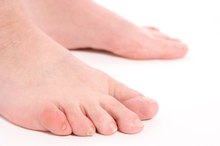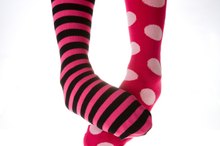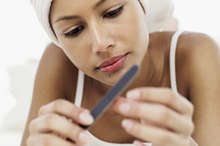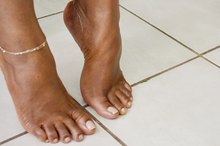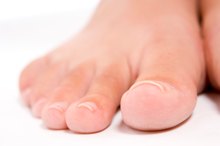What does fact checked mean?
At Healthfully, we strive to deliver objective content that is accurate and up-to-date. Our team periodically reviews articles in order to ensure content quality. The sources cited below consist of evidence from peer-reviewed journals, prominent medical organizations, academic associations, and government data.
The information contained on this site is for informational purposes only, and should not be used as a substitute for the advice of a professional health care provider. Please check with the appropriate physician regarding health questions and concerns. Although we strive to deliver accurate and up-to-date information, no guarantee to that effect is made.
How to Treat Lifted Toenails
Onycholysis is a condition that occurs when a fingernail or toenail separates from the pink skin on the nail bed. It's usually preceded by a gradual separation that may or may not be noticeable because it typically is not associated with extensive pain. Traumatic injury is the most common cause of onycholysis, according to the Aetna Intelihealth website, although nail fungus contributes to a vast number of cases as well 1. Treatment for a lifted toenail varies depending on the cause.
See your doctor for a definitive diagnosis so that you can treat the underlying disease causing the irritable condition on your toes. Various diseases that can cause onycholysis include hyperthyroidism, diabetes and psoriasis. A fungal infection requires different medication to begin the healing process. Other conditions that can cause toenail lifting include overexposure to ultraviolet light, herpes and medication interactions.
What Causes Fingernails to Split & Dent?
Learn More
Keep your toenail dry. After a bath or shower, take time to thoroughly dry all sides of your toe by patting gently and holding the towel over the exposed skin to soak up excess moisture. Wait to don socks or shoes until the surface is thoroughly dry.
Trim your nails closely to remove the ends of the toenails that have begun to separate. Use sterile, sharp clippers or scissors. You often can prevent losing the entire nail by cutting it as close as possible to prevent the loose nail portion from catching on a sock or tight shoes.
Ingrown Toenail on the Pinky
Learn More
Wear shoes that give your toenail plenty of room to breathe and that don’t restrict the nail bed or irritate any part of the loose nail. Shoes that pinch or squeeze the affected toes can cause additional complications and impede the healing process.
Take a supplement that contains 2.5 mg of biotin daily. According to MayoClinic.com, the nutrients can help to grow back thicker, more resilient nails.
Tips
Remain patient as your new nail grows back after treating the underlying cause of the onycholysis. It can take anywhere from 8 to 12 months for a new nail to grow back in and cover the nail bed. Women can paint the hard, dry skin after any infections have been cleared up. A painted fake toenail is barely recognizable in sandals or when barefoot.
Warnings
Avoid any chemical irritants that could cause additional complications while your separated toenail heals and grows back. Avoid nail polish remover and harsh soaps and detergents.
Don't bother with soaking your feet in gelatin or taking gelatin tablets or supplements to grow your nails back. MayoClinic.com reports the practice is based on an old wives' tale.
Related Articles
References
- Mayo Clinic: How to Keep Your Nails Strong
- New Zealand Dermatological Society: Onycholysis
- Mozena, DPM, John D. and Mitnick, DPM, Joshua P. Emerging Concepts In Treating Onychomycosis. Podiatry Today. Oct. 2009; 22(10):46-51.
- Westerberg DP, Voyack MJ. Onychomycosis: Current Trends in Diagnosis and Treatment. Am Fam Physician. 2013;88(11):762-70.
Writer Bio
Linda Ray is an award-winning journalist with more than 20 years reporting experience. She's covered business for newspapers and magazines, including the "Greenville News," "Success Magazine" and "American City Business Journals." Ray holds a journalism degree and teaches writing, career development and an FDIC course called "Money Smart."

